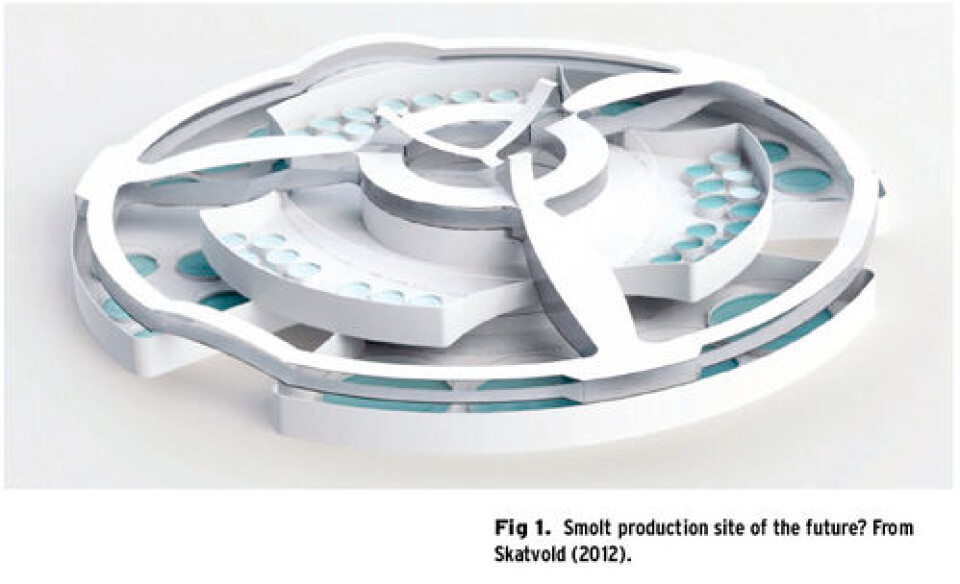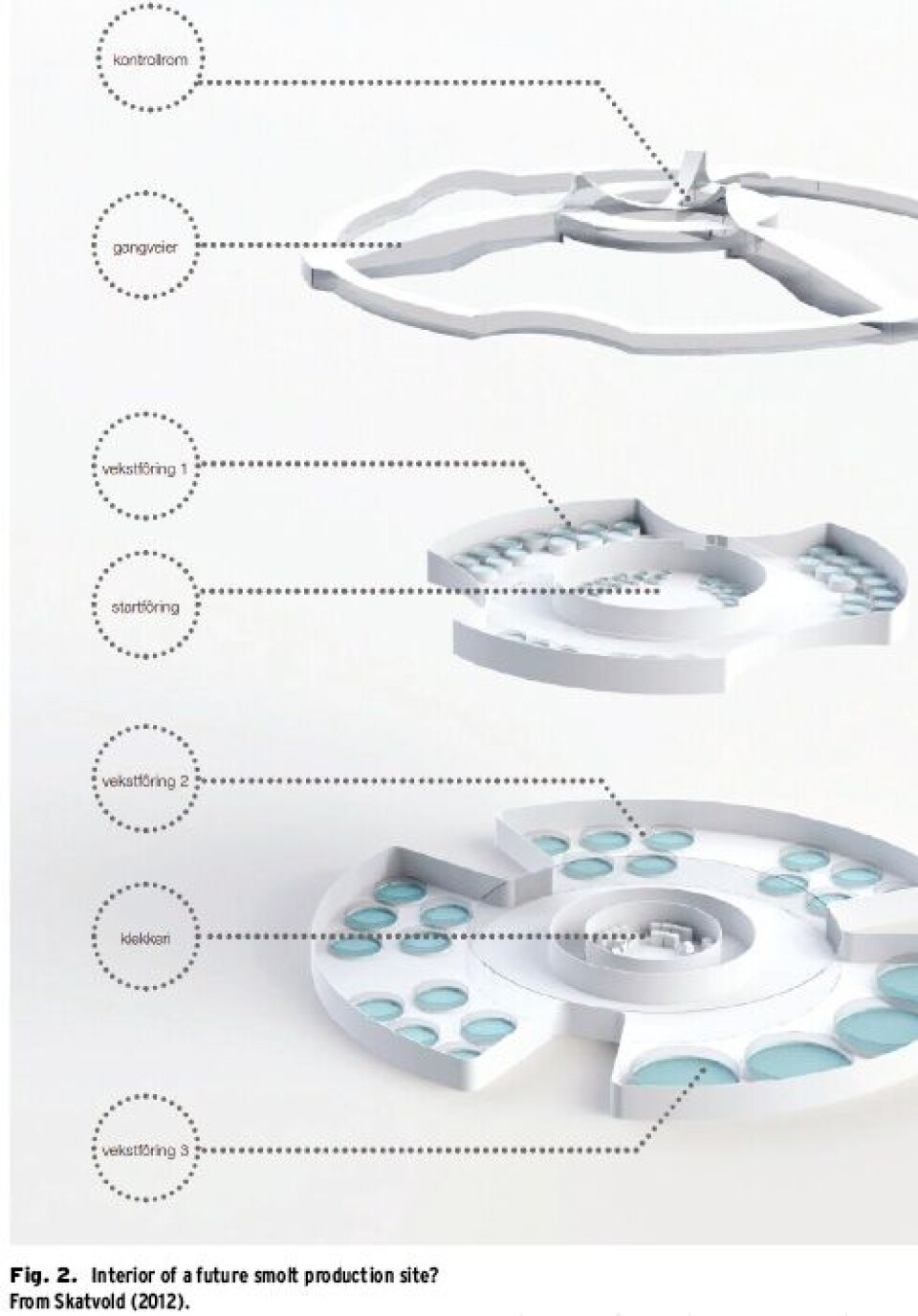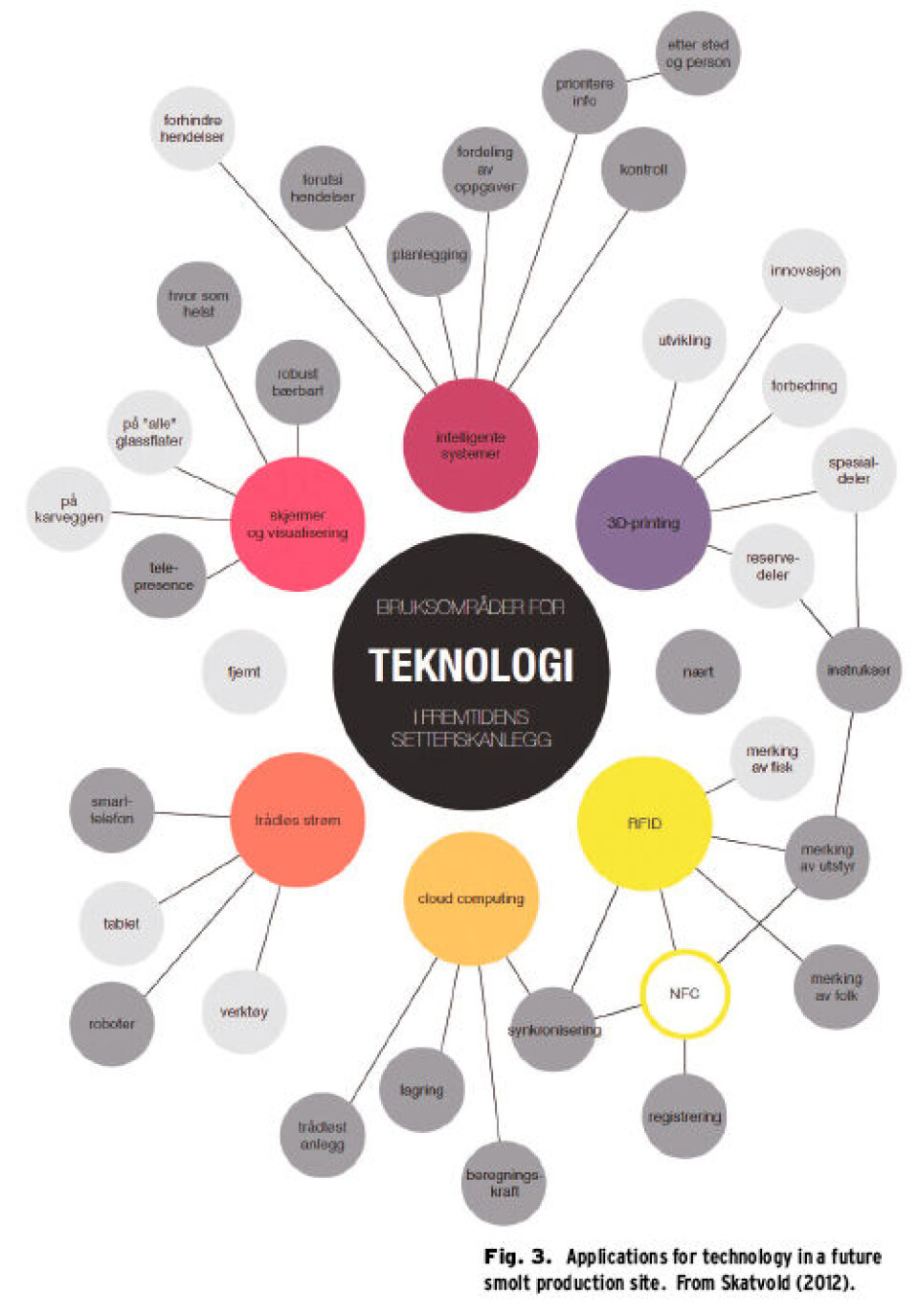Norwegian smolt production sites – from a valley of shadows to new heights of innovation?
By Trond W. Rosten, Leif Magne Sunde, SINTEF Fisheries and aquaculture Trond.Rosten@sintef.no
Let us state this once and for all: In our opinion, Norway has a leading competitive position when it comes to salmon smolt production. Much of is this is due to the fact that we have been lucky with our natural conditions with access to huge amounts of fresh water with natural pressure and good quality. Forget about those localities that have water of the thin type, ion-poor or rich in metals, or that some sites have troubles with ulcers on the fish. Basically, we have solutions for these problems. The smolt stage has, quite rightly, achieved a lot of research attention for several decades. This research has resulted in solutions for both the light regulation for smoltification and good quality. Both these subjects resulted in quantum leaps during the 1990s. We should not underestimate the need for further research and development of these fields, but we believe that the time is right to ask the questions: -What now? –How can we manage to maintain the hegemony as the world’s best smolt producing nation?

From flow-through to RAS? The great expansion of smolt production sites has taken place during the 1980s. There has been scaling-up and expansion since then, with a basis in old technology. Now the recirculation technology (RAS) is advancing rapidly, also in Norway, after a rather difficult start. The Faroes have switched their smolt production over to RAS many years ago. They also say that they wouldn’t think of going back to production of flow-through systems, even if they should get more water! The experience from the Faroes points towards reduced losses and better smolt quality, which has added to the salmon production being back on track with far less problems related to disease. Also in Norway a great development is taking place, with big investments in RAS. This results in a technological lift in the early production phases. However, we still ask the question whether or not one takes into account other trends in technological advances, such as design and technology that result in building of production sites for the future? The parallel in sea based production during the past 10 years is increased size of localities and increasingly more specialised equipment. Smolt production has long been discussed as process industry – but is it? Our claim is that we have hardly started this process, and that the potential is high for both more efficient biological production and for production of new technology. The experience from the technology development in the sea phase shows that one needs to focus just as much on the operations as on the plant design.
Time for innovation? We won’t deny that we are seeing a lot of exciting development, like e.g. the development of a wholly automatic vaccination machine, and today one can build RAS systems with a production potential of 15-20 million smolt, which in itself is very impressive. This shows that there is a potential for technological improvement. If one wishes to exploit this potential for the production of bigger smolt, 1 kg on land or in closed floating systems, the motivation should be extra great. Is the smolt production business ready to meet the challenges this will bring with it? SINTEF Fisheries and aquaculture think that if one wants to reach a 5 fold increase of salmon production, the level of innovation should be increased at all stages. If we want to have a common, long-term focus on smolt and if we want to make sure that the technology development is sustainable and competitive, then everybody has to help and we have to dare to think new. As a technological research group, it is SINTEF’s task to ask questions and to challenge the industry. This is in order to improve important national business branches. This spring, a young student at the Institute of Product Design, in co-operation with SINTEF Fisheries and aquaculture, has written a master thesis about ‘Smolt production systems of the future’ (Mari Skatvold, 2012). Here are many interesting and new thoughts that the aquaculture industry can pick up as an inspiration for the development of the smolt production sites of the future. (Fig. 1 and Fig. 2).

New technology in tomorrow’s smolt production site? When planning smolt production sites for the future, one meets a number of challenges, which we believe can be solved through design and modern technology. There are a lot of applications for this technology (Fig. 3) and unlimited possibilities. Examples of some of the challenges are given in Table 1. Is it possible to combine the challenges of smolt production and the technological possibilities?
More area-intensive smolt production sites? Today’s RAS systems need big areas for water treatment. But we also know that the processes with mechanical and biological filtration rely on quite old cleaning technology from wastewater treatment. We expect that development of new types of filter and chemical, biological processes will, in the long run, lead to bigger areas being used for fish production instead of water cleaning.

Production of own energy? At many places where smolt is produced, one owns concessions to waterfalls and large water resources, which are used for flow through systems. If a greater proportion of smolt production sites will be developed in the direction of RAS technology, this would free water resources that could be used for the production of energy. An assessment of this potential can be interesting in view of the increasing demand for clean and renewable energy. Maybe, in the light of sustainability, one should start focussing on energy used per smolt produced?
Green growth? The industry can add to green growth and a pairing of cycles in both the blue and green sectors by using carbon resources found in the sludge of production processes at smolt production sites for the production of energy and fertilizer. A change to RAS will increase the possibilities for better exploitation of these resources, which are, to a large extent, found in the particle containing part of the waste water.
Automated with robotics? We think that robotics is an area with great potential for development for the modern smolt production. A number of factors point in the direction of increased scale of production, and at the same time the need for control of production will demand intelligent monitoring and control. Interactions between the biological parameters (fish) and the performance of the system and the production processes will be a very exciting new field of innovation. New technology will give the possibility to have online control with the situation in the production units (Fig. 4).
Flow or bottlenecks in the production? Design of facilities in terms of efficient internal logistics is particularly important. This is important with respect to the fact that smolt is a time limited product that needs to be light controlled, moved, counted, sorted and delivered quickly in large groups. In this area one will also have to take into account the development of well boats with sufficient capacity and for handling large quantities of smolt in a short time. A number of technological challenges are pending. The good thing about this is that where one person sees a challenge, another one can see the chance for innovation and for creation of new products.

New ground for smolt production technology and innovation? We believe that the time is right for a broad and long-term mobilization to integrate technical and biological expertise with the aim of realising the potential. It is important to use a model where one can get technology transfer from supporting and even metamorphic industries. Shall we let actors outside the aquaculture industry add to the creative work? The technology arena for the food fish producing industry is TEKMAR (www.tekmar.no), which has been carried out for the 10th time this year. The conference focused on today’s challenges and tomorrow’s solutions in sea based aquaculture through broad dialog. TEKMAR has had up to 230 participants, 70% of whom were from the salmon industry. We think it is time to establish an arena for the smolt production industry in order to increase innovative thinking. As Norway’s leading technological environment, SINTEF will help to start up such an innovation arena (TEKSET). If there is good feedback for these thoughts, we hope to be able to welcome to TEKSET during the course of 2013, - and take a step towards new heights of innovation.























































